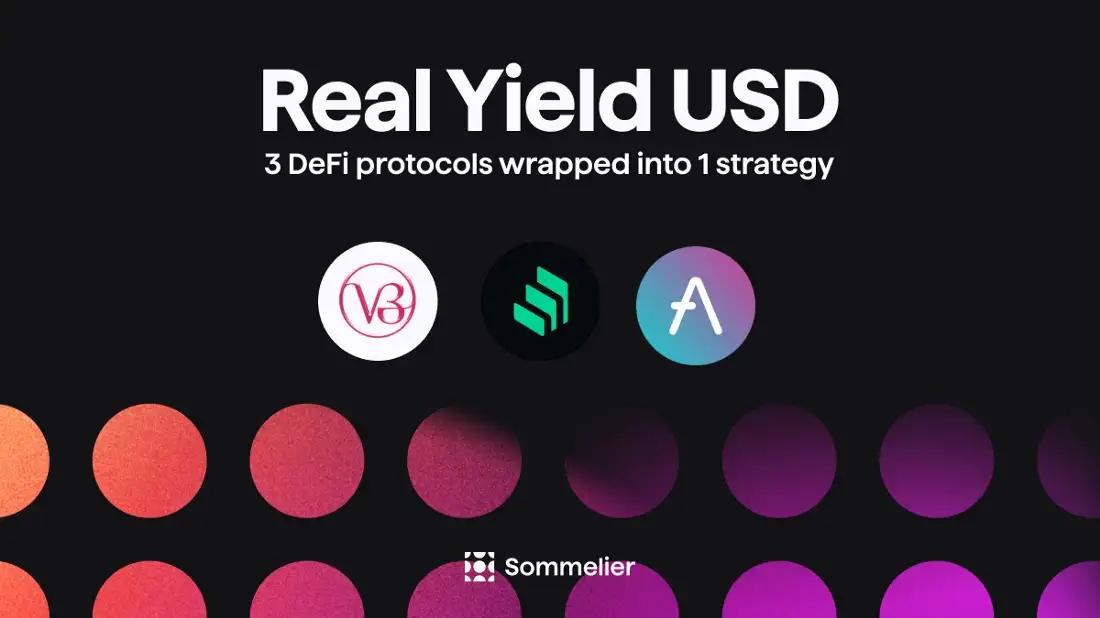Sommelier Liquidity AMA with Federico Landini from DefiLab
Follow Taariq Lewis as he interviews some of the up and coming projects in crypto, to gain insights on becoming a profitable Liquidity Provider for Uniswap V3. Defi-Lab builds tools to show how Uniswap V3 works, how different strategies can be set up and how the behavior of Uniswap V3 strategies compare to other standard strategies in different market conditions. Today we were joined by Co-Creator and Core Architect Federico Landini.

How DeFi Lab Helps Liquidity Providers Simulate Strategy Under Uniswap v3
Among the teams Uniswap founder Hayden Adams mentions on Twitter lately has been DeFi Lab (Defi_Lab.xyz), whose co-founder and core architect, Federico Landini joined us recently for an update on progress with Uniswap v3.
Federico explains: “We are a very small team, just me and my wife Stacy. Our idea is to create some good tools to help people make sense of the DeFi space, and to help people understand the risks and rewards that all these protocols are offering to us. I work as an architect, I have a long-term interest in DeFi. I started following crypto in 2017 and loved it. Stacy joined me with the role of front-end developer, development in general. As you can imagine we are a close team, and our roles are a bit overlapping sometimes.
“Basically, a couple of months ago I started looking into Uniswap v3. I read the whitepaper, and as I often do I started doing my models for myself and my studies and I was doing some Excel calculations and I built a Uniswap v3 simulator in Excel. My wife saw it, she was very interested and said 'why don’t we develop something and publish something for the community?’ We launched one month ago and we never expected to get so much attention and feedback from the community. We are getting excited and we want to be more.”
Uniswap v3 strategy simulator
Federico studied the whitepaper to try to understand how Uniswap v3 was different from Uniswap v2. He observes:
“I think it’s a very cool product and offers a lot of flexibility and a lot of options to traders but it can be a bit overwhelming and complicated if you just approach this starting from zero.”
So Federico built a tool that would help him understand how being a liquidity provider in v3 is different from being a liquidity provider in Uniswap v2 or being just an author of tokens using standard strategies. He says:
“I deep dived into the whitepaper and into the math and understood the logic behind it. I tried to build this tool that allows you quickly and easily to simulate your strategy and to understand how your strategy would work under different market conditions.”
Two main functionalities
There are two interesting main functionalities where users are focusing their attention and generating a lot of questions on Federico’s telegram. He explains:
“The first part of the tool is very good to simulate and to place the price ranges. As most of us probably know, the main innovation of Uniswap v3 is that the protocol allows us to make a minimum and maximum price limit to set the range in which the liquidity is active. This is the big difference from v2, which was more passive. In this way we have an ‘active strategy.’ This is the theory: Whether you are setting a wide range or narrow range will impact your performances. So our tool lets us compare up to two strategies so we can select a pool, for example Ethereum and USDC, and we can simulate strategies and see how setting a large or a narrow range will impact our possibilities of gaining fees.
“So one thing that for me is very important, and I try to make it very clear in the tool, is that we always have a trade off between risk and reward. Like everything in life, basically. So, setting a very narrow price range allows us to gain very high fees, but obviously it’s quite risky because with a tight market like crypto the price might go out of our range, and our liquidity is not active any more. Therefore, yes, we might gain a lot of fees but we also have the risk that the price will go out of our range and our liquidity will not be active any more.”
Uniswap v3 is a great innovation, it brings revolutionary new functionalities into DeFi. But some liquidity providers say that while the user interface is simple, it doesn't help them to understand the best ranges that suit their risk/reward profile.
“This is where we come into play,” says Federico. “We can support the user in these decisions. Our site can be used side by side with the Uniswap UI to help the users understand the best ranges that suit their risk/reward profile.”
Change positions wisely
Once your position is in, with the high fees that we have now on Ethereum it’s not very good to change your position often.
Says Federico: “It’s good you’ve made a study on what you want to achieve before opening the position. Our tool allows you to simulate. This is a very common problem, mainly in the last month because the market has been so volatile. Setting a range is not a guarantee that your range will be relevant for a long term.
“The problem I see at the moment with the gas fees on Ethereum level one is that for a small trader changing positions often the transaction fees are demanding. I think that there is where tools like the ones Sommelier are developing that automate this kind of active management could help the small traders at least when we are talking about using Uniswap v3 on Ethereum level one.”
He adds: “I’m very excited about level two, because the promise of level two is that transaction fees will be much lower. Also, this will allow more liquidity providers to be more active in their strategies.”
Looking ahead
DeFi plans to continue improving their tool with a little help from the Uniswap foundation.
Frederico says: “We are in talks with the Uniswap foundation to get a grant that will allow us to continue developing and introducing new functionalities. One side that we want to expand on is the fee calculation and fee estimation for the future. So when we did this first version of the tool, Uniswap v3 was not live yet, so we didn’t have any kind of historical data and there was not much experience in the space because it was such a new product that we couldn’t find data for a deep analysis of future fees. Now that Uniswap v3 is live for one month, we’ll start adding some data that we can play around with and we will for sure improve the tool to help the user.”
DeFi Lab doesn’t know yet about v3 and level two because it’s so new again that they don’t have a clear view of how the architecture will work and how the liquidity will be shared or not between level one and level two.
“It’s something that we’ll look into very closely because we think that this is where small liquidity providers will go for their active trading.”
Pool creators are still enjoying v2 even though providing liquidity is more efficient on v3. Federico observes:
“Even if you want to have a very passive strategy with a very large price range you would be better in v3 than v2. This is also how I manage my position in v3. Since I’m a small liquidity provider, I feel like maximizing the time the price will stay in the range is the best bet that you have as a small trader. Also in v2, you might want to move your liquidity to v3 and keep a very wide range.
“Right now, the tool does show how v2 compares to v3, but what I think is important, and this is where we are going to improve the tool, is to show that even keeping a very wide range v3 should in the long term outperform v2. So, all the people that are now still in v2, once the new protocol is battle tested and people understand a bit better how it works and all the functionalities behind the new design, I think people will just move because they will make more money in v3 compared to v2.”
More articles
© 2025 Somm by Bajanss OÜ –Maakri 36-50, Tallinn, Estonia 10145




